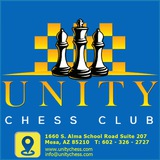🔺 The only correct plan on the board. transferring the rook to f6 in order to attack on opponent's weakness 🔺
🔺 1.a3! with the idea of increasing the spatial advantage by playing b4 and controling c5 square. 🔺
🔺1.Qc1!
A prophylactic move to prevent Ba6:
1.Qc1 Ba6? 2.B.a6 R.a6 3.b5 cb5 4.c6+/-
Instead if white had played 1.Bd3 black could have played Ba6 immediately:
1.Bd3 Ba6! 2.B.a6 R.a6 3.b5 cb5 4.c6 Qc8! and the knight on c3 is unprotected.🔺
A prophylactic move to prevent Ba6:
1.Qc1 Ba6? 2.B.a6 R.a6 3.b5 cb5 4.c6+/-
Instead if white had played 1.Bd3 black could have played Ba6 immediately:
1.Bd3 Ba6! 2.B.a6 R.a6 3.b5 cb5 4.c6 Qc8! and the knight on c3 is unprotected.🔺
the correct plan for black is exchanging bad bishop for the good one.
Qc8!--->Ba6
the point is:
Ba6? 2.B.a6 R.a6 3.b5±
Qc8!--->Ba6
the point is:
Ba6? 2.B.a6 R.a6 3.b5±
Black lost his chance of the draw by playing
1...Ra8? 2.Rc2 +-
He should have played
1...e.d2!! 2.c8=Q K.d5 3.Q.f8 Kc4 =
1...Ra8? 2.Rc2 +-
He should have played
1...e.d2!! 2.c8=Q K.d5 3.Q.f8 Kc4 =
Nd2!
An interesting manoeuvre to take control over d5 square. Great grandmasters like Kasparov, Adams, Shirov and Svidler used it in their games.
An interesting manoeuvre to take control over d5 square. Great grandmasters like Kasparov, Adams, Shirov and Svidler used it in their games.
🔵🔵We have divided the 32 boards into eight sections of 4 encounters. Let's have a look at who are the favourites and which are the most interesting battles.
Among the first eight, the most interesting match looks like Bacrot against Bu Xiangzhi. Apart from this, there is a clear favourite in each of the other three encounters: Magnus Carlsen, Peter Svidler and Radoslaw Wojtaszek.👇👇👇
Two matches stand out here: Lenderman and Tari — the only pair who knocked out 2700+ players from this tournament — and David Navara against Ivan Cheparinov which also seems like something to look forward to.👇👇
